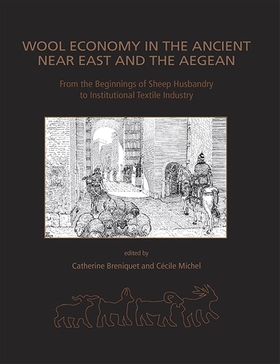
Lägg till önskelistan
Wool Economy in the Ancient Near East (Ancient Textiles) e-bok
Pris
115 kr
The history of the Ancient Near East covers a huge chronological frame, from the first pictographic texts of the late 4th millennium to the conquest of Alexander the Great in 333 BC. During these millennia, different societies developed in a changing landscape where sheep (and their wool) always played an important economic role. The 22 papers presented here explore the place of wool in the ancient economy of the region, where large-scale textile production began during the second half of the...
E-Bok
115 kr
Pris
Förlag
Oxbow Books
Utgiven
15 Februari 2021
Längd
400 sidor
Genrer
Historia & Arkeologi, Fackböcker
Serie
Ancient Textiles
Språk
English
Format
epub
Kopieringsskydd
Vattenmärkt
ISBN
9781782976325
The history of the Ancient Near East covers a huge chronological frame, from the first pictographic texts of the late 4th millennium to the conquest of Alexander the Great in 333 BC. During these millennia, different societies developed in a changing landscape where sheep (and their wool) always played an important economic role. The 22 papers presented here explore the place of wool in the ancient economy of the region, where large-scale textile production began during the second half of the 3rd millennium. By placing emphasis on the development of multi-disciplinary methodologies, experimentation and use of archaeological evidence combined with ancient textual sources, the wide-ranging contributions explore a number of key themes. These include: the first uses of wool in textile manufacture and organization of weaving; trade and exchange; the role of wool in institutionalized economies; and the reconstruction of the processes that led to this first form of industry in Antiquity. The numerous archaeological and written sources provide an enormous amount of data on wool, textile crafts, and clothing and these inter-disciplinary studies are beginning to present a comprehensive picture of the economic and cultural impact of woollen textiles and textile manufacturing on formative ancient societies.




